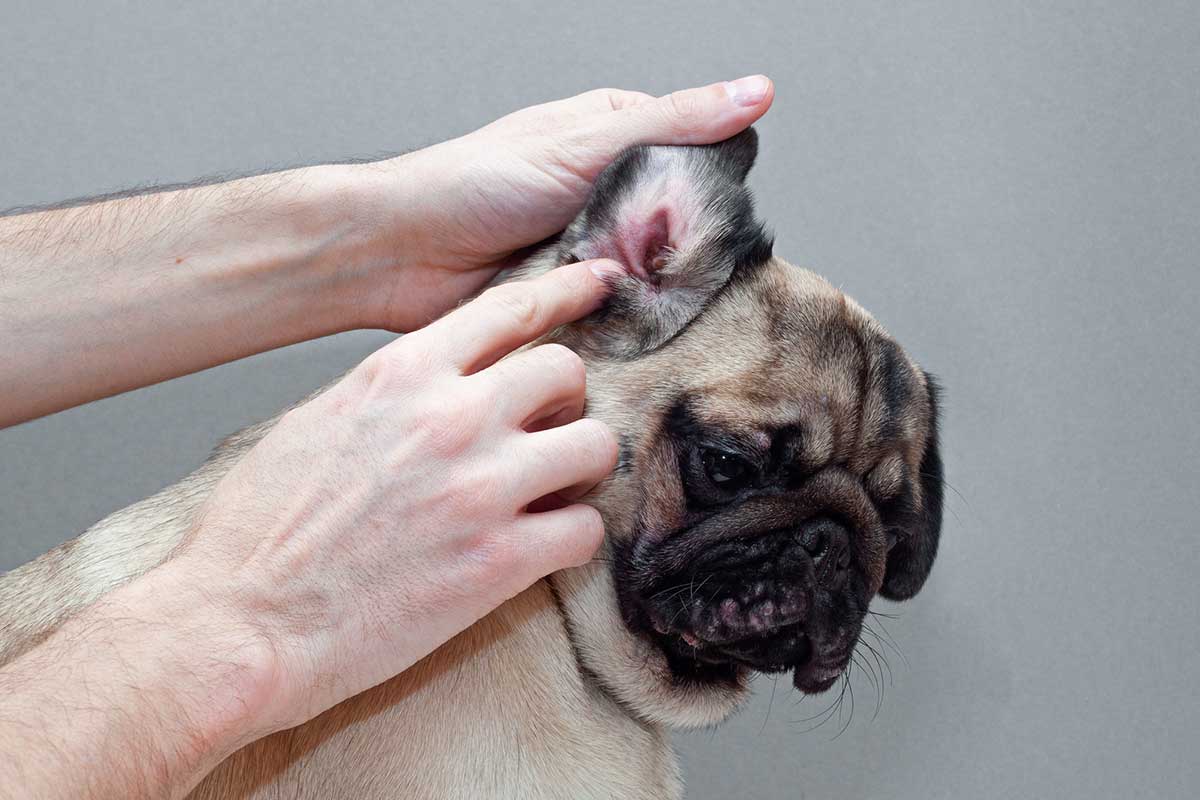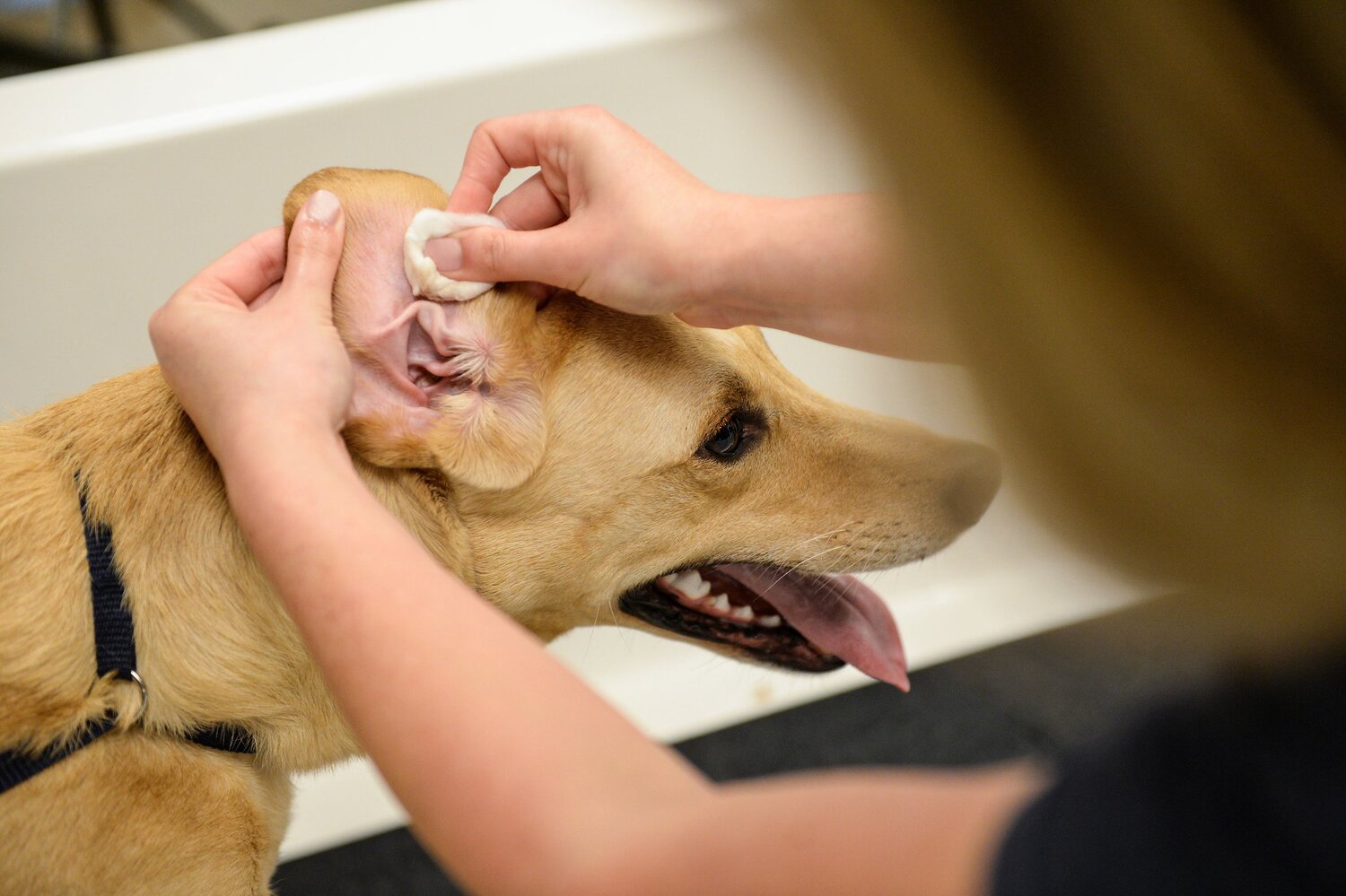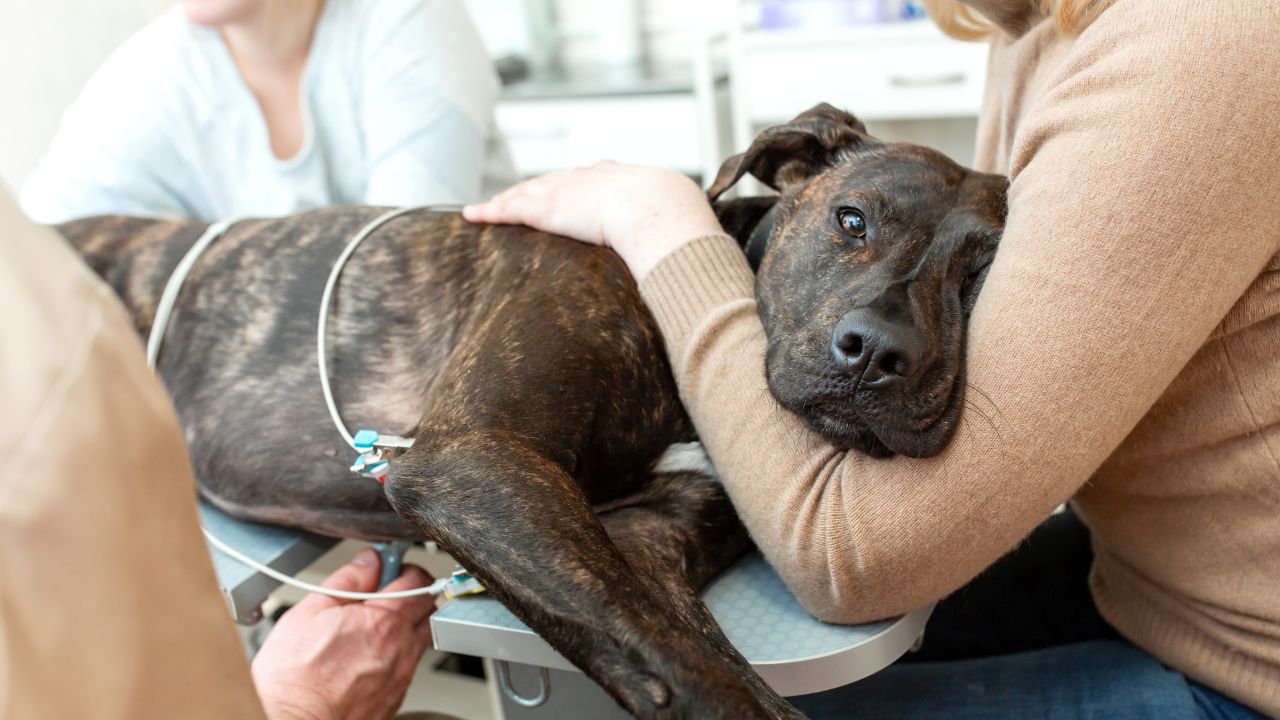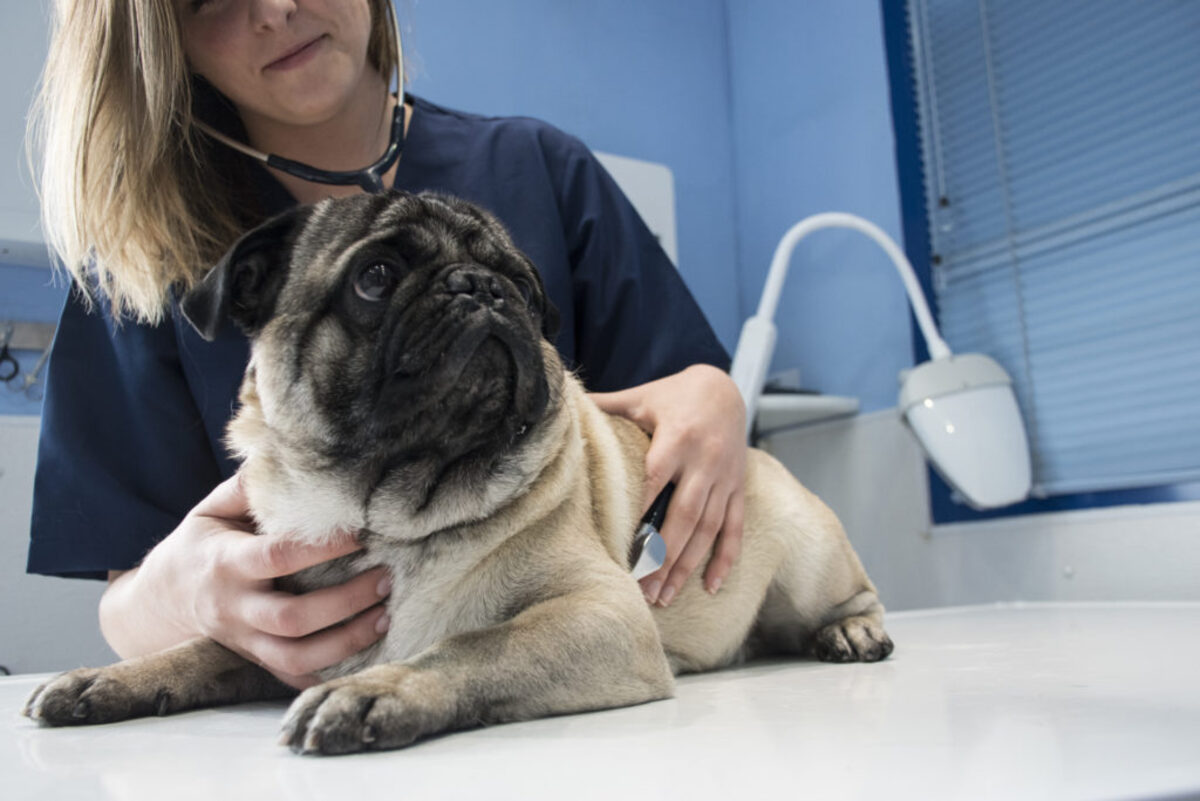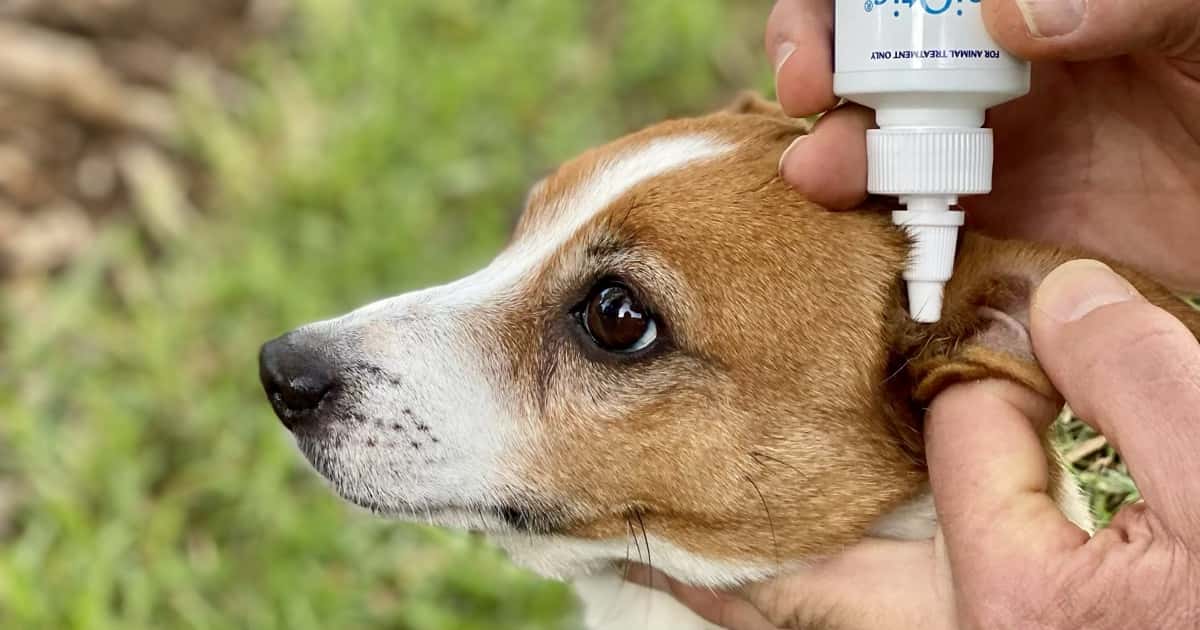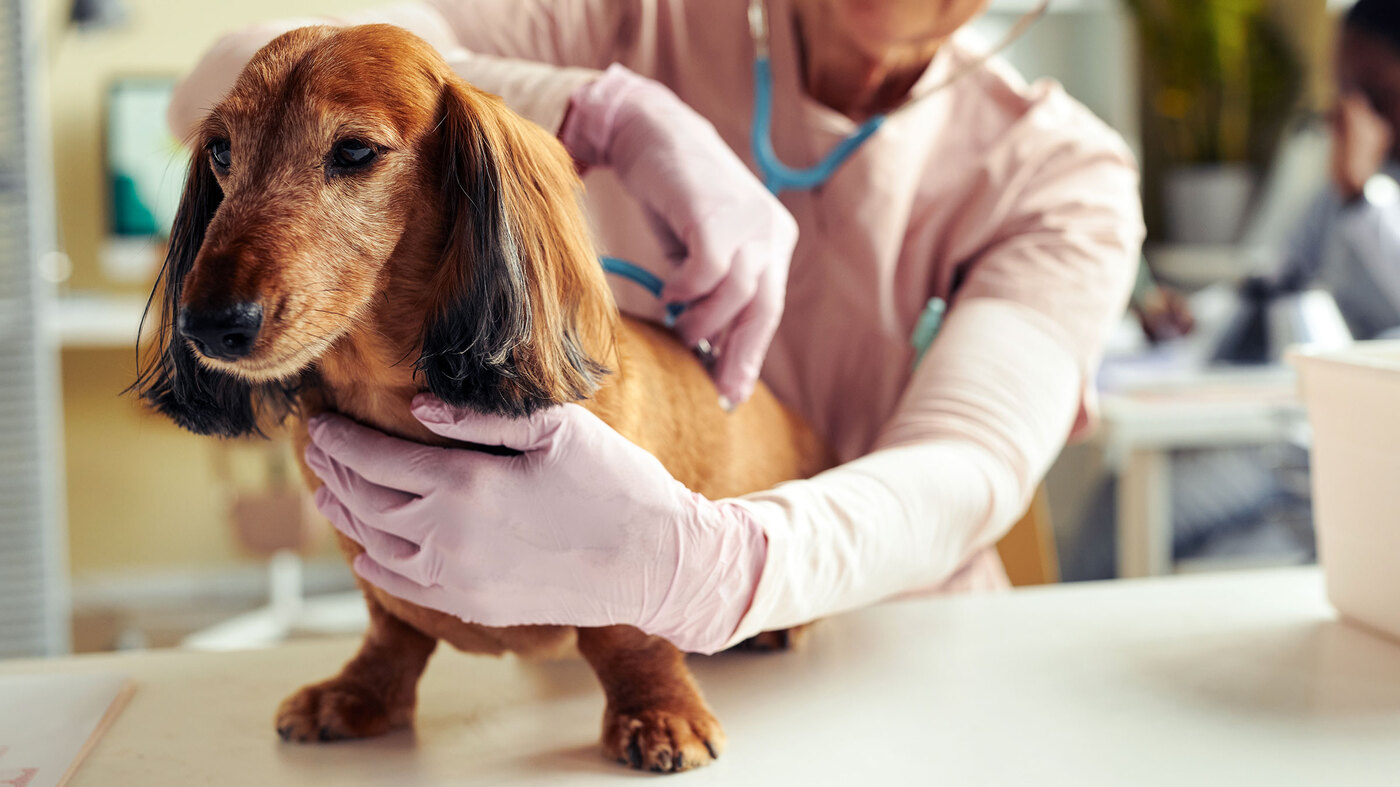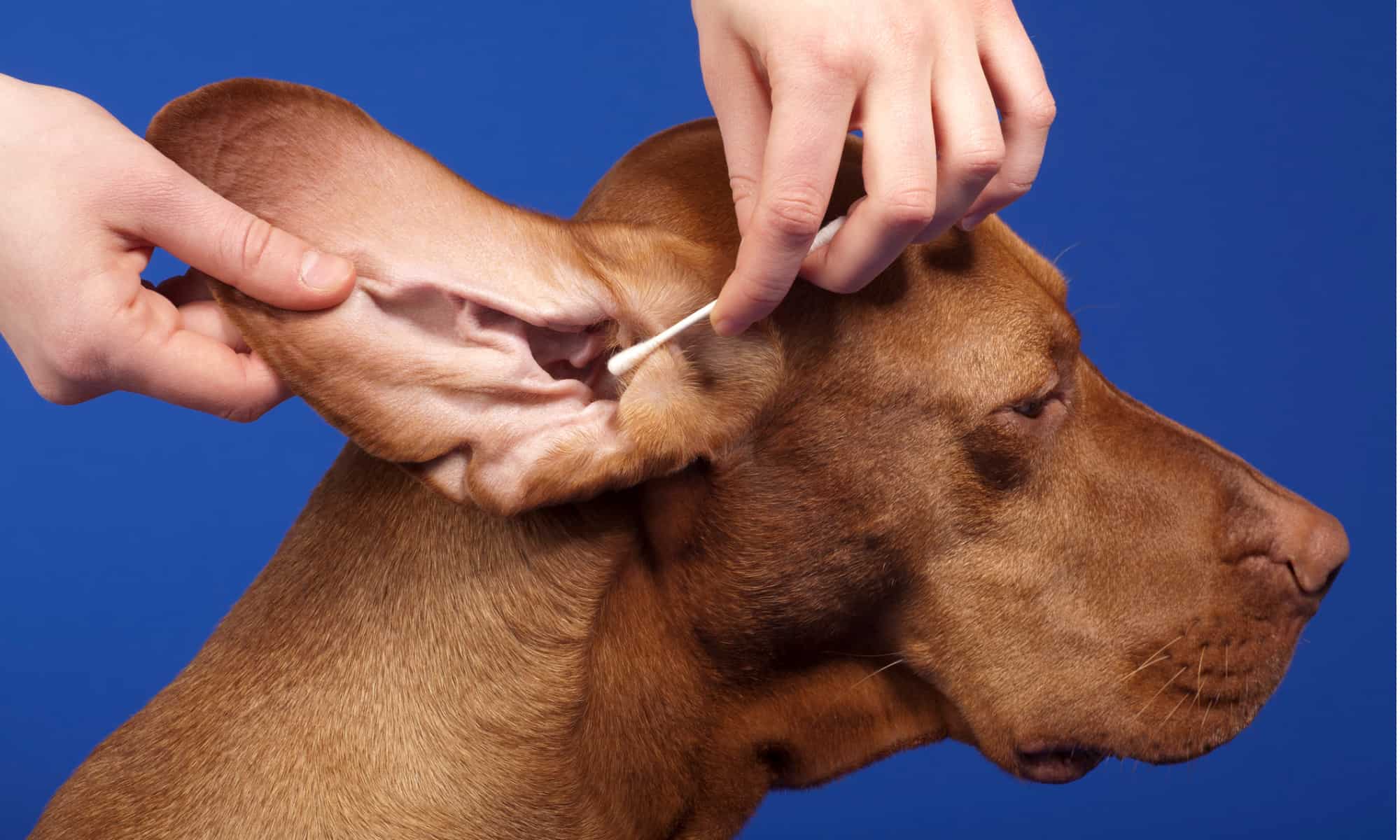Home>Health & Wellness>Common Health Issues>Urinary Health>Why Do Dogs Get Urinary Tract Infections?


Urinary Health
Why Do Dogs Get Urinary Tract Infections?
Modified: February 21, 2024
Learn about the causes and prevention of urinary tract infections in dogs. Discover tips for maintaining your dog's urinary health.
(Many of the links in this article redirect to a specific reviewed product. Your purchase of these products through affiliate links helps to generate commission for Pawsomeoldies.com, at no extra cost. Learn more)
Table of Contents
Introduction
Urinary tract infections (UTIs) are a common health concern for dogs, impacting their overall well-being and quality of life. Just like humans, dogs can experience discomfort and complications arising from UTIs, making it crucial for pet owners to understand the causes, symptoms, and treatment options for this condition. By gaining insight into the intricacies of urinary health in dogs, individuals can take proactive measures to safeguard their furry companions from the distress of UTIs.
Understanding the underlying factors contributing to UTIs in dogs is essential for promoting their urinary health. From the anatomy of the urinary tract to the potential causes of infections, a comprehensive grasp of these aspects is pivotal in addressing and preventing UTIs in our canine friends.
In this article, we will delve into the intricate world of urinary health in dogs, shedding light on the anatomy of the urinary tract, the common causes of UTIs, recognizable symptoms, diagnostic procedures, and effective treatment and prevention strategies. By exploring these facets, pet owners and animal enthusiasts can equip themselves with the knowledge needed to ensure the well-being of their beloved canine companions.
As we embark on this journey through the realm of urinary health in dogs, it is important to recognize the significance of proactive care and vigilance in safeguarding our pets from the discomfort and potential complications associated with UTIs. Let's delve into the intricate workings of the canine urinary system and gain valuable insights into promoting optimal urinary health for our furry friends.
Read more: What Helps Dogs’ Urinary Tract Infections
Anatomy of the Urinary Tract in Dogs
The urinary tract in dogs comprises a complex system responsible for the elimination of waste and maintenance of fluid balance within the body. Understanding the intricate anatomy of this system is crucial in comprehending the susceptibility of dogs to urinary tract infections (UTIs) and the associated health implications.
Components of the Canine Urinary Tract
-
Kidneys: These vital organs play a pivotal role in filtering waste products from the blood to produce urine. Additionally, they regulate electrolyte balance and blood pressure, contributing to overall homeostasis in the body.
-
Ureters: Once urine is formed in the kidneys, it travels through the ureters, which are muscular tubes connecting the kidneys to the bladder. The peristaltic contractions of the ureters facilitate the movement of urine into the bladder.
-
Bladder: A muscular sac, the bladder serves as a reservoir for urine. It expands to accommodate urine and contracts to expel it during urination. The lining of the bladder is designed to prevent the leakage of urine back into the body.
-
Urethra: This tube connects the bladder to the external environment, allowing the expulsion of urine from the body. In male dogs, the urethra also serves the reproductive system, facilitating the passage of semen during mating.
Unique Aspects of Canine Urinary Tract Anatomy
-
Anatomical Differences: Female dogs generally have a shorter urethra than males, making them more susceptible to UTIs due to the shorter distance bacteria need to travel to reach the bladder.
-
Micturition Reflex: Dogs possess a micturition reflex, which is the neurological mechanism controlling the release of urine from the bladder. This reflex is essential for voluntary urination and the maintenance of bladder control.
-
Urinary pH: The urinary pH of dogs plays a crucial role in their susceptibility to UTIs. Factors such as diet and hydration levels can influence urinary pH, impacting the likelihood of bacterial growth and infection.
By gaining a comprehensive understanding of the anatomy of the urinary tract in dogs, pet owners and veterinary professionals can appreciate the intricacies of this vital system. This knowledge serves as a foundation for recognizing the potential vulnerabilities of the urinary tract and implementing measures to promote optimal urinary health in dogs.
Causes of Urinary Tract Infections in Dogs
Urinary tract infections (UTIs) in dogs can stem from various factors, often leading to discomfort and health complications. Understanding the underlying causes of UTIs is crucial for implementing preventive measures and addressing the condition effectively. Several primary factors contribute to the development of UTIs in dogs:
-
Bacterial Infiltration: The most common cause of UTIs in dogs is the infiltration of bacteria into the urinary tract. Escherichia coli, Staphylococcus, and Proteus are among the bacteria that can lead to infections. Bacteria may enter the urinary system through the urethra and ascend to the bladder, resulting in inflammation and infection.
-
Anatomical Predispositions: Certain anatomical factors can predispose dogs to UTIs. Female dogs, due to their shorter urethra, are more susceptible to bacterial migration into the bladder. Additionally, structural abnormalities in the urinary tract can create pockets where bacteria can thrive, increasing the risk of infections.
-
Urinary Stasis: When urine remains stagnant in the bladder for extended periods, it creates an environment conducive to bacterial growth. Incomplete emptying of the bladder, often associated with conditions such as bladder stones or tumors, can lead to urinary stasis, increasing the likelihood of UTIs.
-
Immune System Compromises: Dogs with weakened immune systems are more vulnerable to UTIs. Conditions such as diabetes, Cushing's disease, and cancer can compromise the immune response, reducing the body's ability to combat bacterial invasion in the urinary tract.
-
Urinary pH Imbalance: The pH level of a dog's urine plays a crucial role in their susceptibility to UTIs. An imbalance in urinary pH, often influenced by diet and hydration levels, can create an environment favorable for bacterial proliferation, contributing to the development of UTIs.
-
Foreign Bodies: Presence of foreign bodies in the urinary tract, such as urinary catheters or calculi, can serve as sites for bacterial attachment and proliferation, leading to infections.
By recognizing these underlying causes of UTIs in dogs, pet owners and veterinary professionals can take proactive measures to mitigate the risk factors and promote urinary health in their canine companions. Through a combination of preventive strategies and timely intervention, the incidence of UTIs in dogs can be minimized, ensuring their overall well-being and vitality.
Symptoms of Urinary Tract Infections in Dogs
Recognizing the symptoms of urinary tract infections (UTIs) in dogs is crucial for timely intervention and effective management of this common health concern. UTIs can manifest in various ways, indicating discomfort and potential complications in affected dogs. By being vigilant and observant, pet owners can identify the following symptoms, signaling the presence of a UTI in their canine companions:
-
Increased Urination: Dogs with UTIs may display a heightened frequency of urination. This can be observed through more frequent bathroom breaks or instances of urination indoors, particularly in previously housetrained dogs.
-
Straining to Urinate: Struggling or straining during urination is a telltale sign of potential urinary tract issues. Dogs may exhibit discomfort or vocalize while attempting to urinate, indicating the presence of a UTI.
-
Blood in Urine: Hematuria, or the presence of blood in the urine, is a concerning symptom associated with UTIs. The urine may appear discolored, ranging from pink to red, signaling potential inflammation and irritation in the urinary tract.
-
Foul Odor: A strong, unpleasant odor emanating from the urine can indicate the presence of a UTI. This distinct odor is often indicative of bacterial activity in the urinary tract, necessitating prompt attention.
-
Lethargy and Discomfort: Dogs with UTIs may exhibit signs of general malaise, including lethargy, decreased activity levels, and reluctance to engage in regular physical activities. Discomfort and restlessness may also be observed.
-
Accidents Indoors: In cases where dogs are typically well-housetrained, instances of urinating indoors or displaying signs of distress while attempting to urinate can point to a potential UTI.
-
Excessive Licking of Genital Area: Dogs may excessively lick their genital area as a response to discomfort or irritation caused by a UTI. This behavior can serve as a visible indicator of urinary tract issues.
-
Change in Urinary Habits: Any noticeable changes in a dog's urinary habits, such as prolonged squatting during urination or difficulty in fully emptying the bladder, warrant attention and potential evaluation for UTIs.
By remaining attentive to these symptoms, pet owners can promptly seek veterinary care and intervention, facilitating the diagnosis and treatment of UTIs in their beloved canine companions. Early recognition of these symptoms is instrumental in mitigating the discomfort and potential complications associated with urinary tract infections in dogs.
Diagnosing Urinary Tract Infections in Dogs
Diagnosing urinary tract infections (UTIs) in dogs requires a comprehensive approach that encompasses clinical evaluation, diagnostic tests, and a thorough understanding of the canine urinary system. Veterinary professionals employ various methods to accurately diagnose UTIs and determine the most effective course of treatment for affected dogs.
Clinical Assessment
The diagnostic process often commences with a detailed clinical assessment of the dog's medical history and presenting symptoms. Veterinary professionals rely on the information provided by pet owners regarding the dog's urinary habits, changes in behavior, and any observed symptoms indicative of a potential UTI. This initial evaluation serves as a crucial foundation for further diagnostic measures.
Urinalysis
Urinalysis is a fundamental diagnostic tool used to assess the composition and characteristics of a dog's urine. This involves analyzing a urine sample to detect the presence of blood, bacteria, white blood cells, and other indicators of urinary tract inflammation or infection. Additionally, the pH level of the urine is evaluated, providing valuable insights into the dog's urinary health and potential predisposition to UTIs.
Read more: How Do Dogs Get Urinary Crystals?
Urine Culture and Sensitivity Testing
In cases where UTIs are suspected, urine culture and sensitivity testing may be conducted to identify the specific bacteria causing the infection and determine the most effective antibiotics for treatment. This diagnostic approach aids in tailoring the treatment regimen to target the specific bacterial strain responsible for the UTI, thereby optimizing therapeutic outcomes.
Imaging Studies
In instances where underlying anatomical abnormalities or urinary tract obstructions are suspected, imaging studies such as ultrasound or radiography may be employed to visualize the urinary system. These diagnostic modalities enable veterinary professionals to identify structural issues, urinary stones, or tumors that could contribute to UTIs or urinary complications in dogs.
Additional Diagnostics
Depending on the clinical presentation and suspected underlying causes, additional diagnostic tests such as blood work, urine protein-to-creatinine ratio assessment, and bacterial culture of expressed prostatic fluid (in male dogs) may be recommended to gain a comprehensive understanding of the dog's urinary health and overall well-being.
By integrating these diagnostic approaches, veterinary professionals can accurately diagnose UTIs in dogs, elucidating the underlying factors contributing to the condition and guiding the implementation of targeted treatment strategies. Timely and precise diagnosis is pivotal in alleviating the discomfort and potential complications associated with UTIs, ultimately promoting the urinary health and overall vitality of canine companions.
Treatment and Prevention of Urinary Tract Infections in Dogs
Effective management of urinary tract infections (UTIs) in dogs encompasses a multifaceted approach that combines targeted treatment strategies with proactive measures to prevent recurrent infections. By addressing the underlying causes of UTIs and implementing preventive interventions, pet owners and veterinary professionals can safeguard the urinary health of canine companions, promoting their overall well-being and vitality.
Read more: Why Do People Get Dog Allergies
Treatment Strategies
Upon the diagnosis of a UTI in a dog, prompt and appropriate treatment is essential to alleviate discomfort and combat the infection. The following treatment strategies are commonly employed to address UTIs in dogs:
-
Antibiotic Therapy: The cornerstone of UTI treatment involves the administration of antibiotics to combat the underlying bacterial infection. The selection of antibiotics is guided by the results of urine culture and sensitivity testing, ensuring targeted therapy tailored to the specific bacterial strain responsible for the UTI.
-
Symptomatic Relief: Dogs experiencing discomfort and urinary irritation may benefit from symptomatic relief measures, including pain management and anti-inflammatory medications to alleviate discomfort and promote urinary comfort during the healing process.
-
Fluid Therapy: Adequate hydration is crucial for flushing out bacteria from the urinary tract and promoting the elimination of toxins. Encouraging increased water intake and, in some cases, administering intravenous fluids can support the dog's urinary health and aid in the resolution of the UTI.
-
Follow-Up Monitoring: Regular follow-up appointments with a veterinarian are essential to monitor the dog's response to treatment, assess the resolution of the infection, and make any necessary adjustments to the therapeutic regimen.
Prevention Strategies
Preventing UTIs in dogs involves proactive measures aimed at mitigating the risk factors associated with urinary tract infections. By implementing the following preventive strategies, pet owners can minimize the likelihood of UTIs and promote optimal urinary health in their canine companions:
-
Hygiene and Grooming: Maintaining proper hygiene, including regular grooming and cleaning of the genital area, can reduce the risk of bacterial contamination and lower the likelihood of UTIs.
-
Regular Exercise and Outdoor Breaks: Encouraging regular exercise and providing ample opportunities for outdoor bathroom breaks can promote healthy urinary habits, aiding in the regular emptying of the bladder and minimizing urinary stasis.
-
Balanced Nutrition: A well-balanced diet tailored to the dog's specific nutritional needs supports overall health, including urinary function. Optimal nutrition contributes to immune system support and urinary pH balance, reducing the susceptibility to UTIs.
-
Hydration: Ensuring adequate hydration by providing access to clean, fresh water at all times is essential for maintaining urinary tract health and promoting the flushing of bacteria from the system.
-
Routine Veterinary Care: Regular veterinary check-ups and preventive care enable early detection of potential urinary issues, allowing for timely intervention and the implementation of preventive measures.
By integrating these treatment and prevention strategies, pet owners and veterinary professionals can collaborate to effectively manage UTIs in dogs and minimize the risk of recurrent infections. Through a proactive and holistic approach to urinary health, canine companions can thrive with optimal well-being and urinary vitality.
Conclusion
In conclusion, urinary tract infections (UTIs) pose significant health concerns for dogs, impacting their comfort, well-being, and overall quality of life. The intricate anatomy of the canine urinary system, coupled with various predisposing factors, underscores the susceptibility of dogs to UTIs. Understanding the causes, symptoms, diagnosis, treatment, and prevention of UTIs is paramount for pet owners and veterinary professionals in ensuring the urinary health of canine companions.
The recognition of common causes such as bacterial infiltration, anatomical predispositions, urinary stasis, immune system compromises, urinary pH imbalance, and the presence of foreign bodies provides valuable insights into the multifaceted nature of UTIs in dogs. By identifying these underlying factors, proactive measures can be implemented to mitigate the risk of infections and promote urinary wellness.
Furthermore, the ability to recognize the symptoms of UTIs, including increased urination, straining to urinate, blood in urine, and changes in urinary habits, empowers pet owners to seek timely veterinary care and intervention. Early diagnosis through comprehensive clinical assessment, urinalysis, and imaging studies facilitates targeted treatment, ensuring the effective management of UTIs in dogs.
The treatment of UTIs often involves antibiotic therapy, symptomatic relief, fluid therapy, and diligent follow-up monitoring to track the dog's response to treatment. Concurrently, preventive strategies encompassing hygiene and grooming practices, regular exercise, balanced nutrition, hydration, and routine veterinary care play a pivotal role in minimizing the risk of UTIs and promoting urinary wellness in dogs.
By integrating these insights into the care and management of canine urinary health, pet owners and veterinary professionals can collaborate to safeguard dogs from the discomfort and potential complications associated with UTIs. Through a holistic approach encompassing proactive preventive measures and targeted interventions, dogs can thrive with optimal urinary health, vitality, and well-being.
In essence, the comprehensive understanding of UTIs in dogs serves as a cornerstone for promoting the overall health and happiness of our beloved canine companions, ensuring that they lead fulfilling lives free from the burdens of urinary tract infections.



